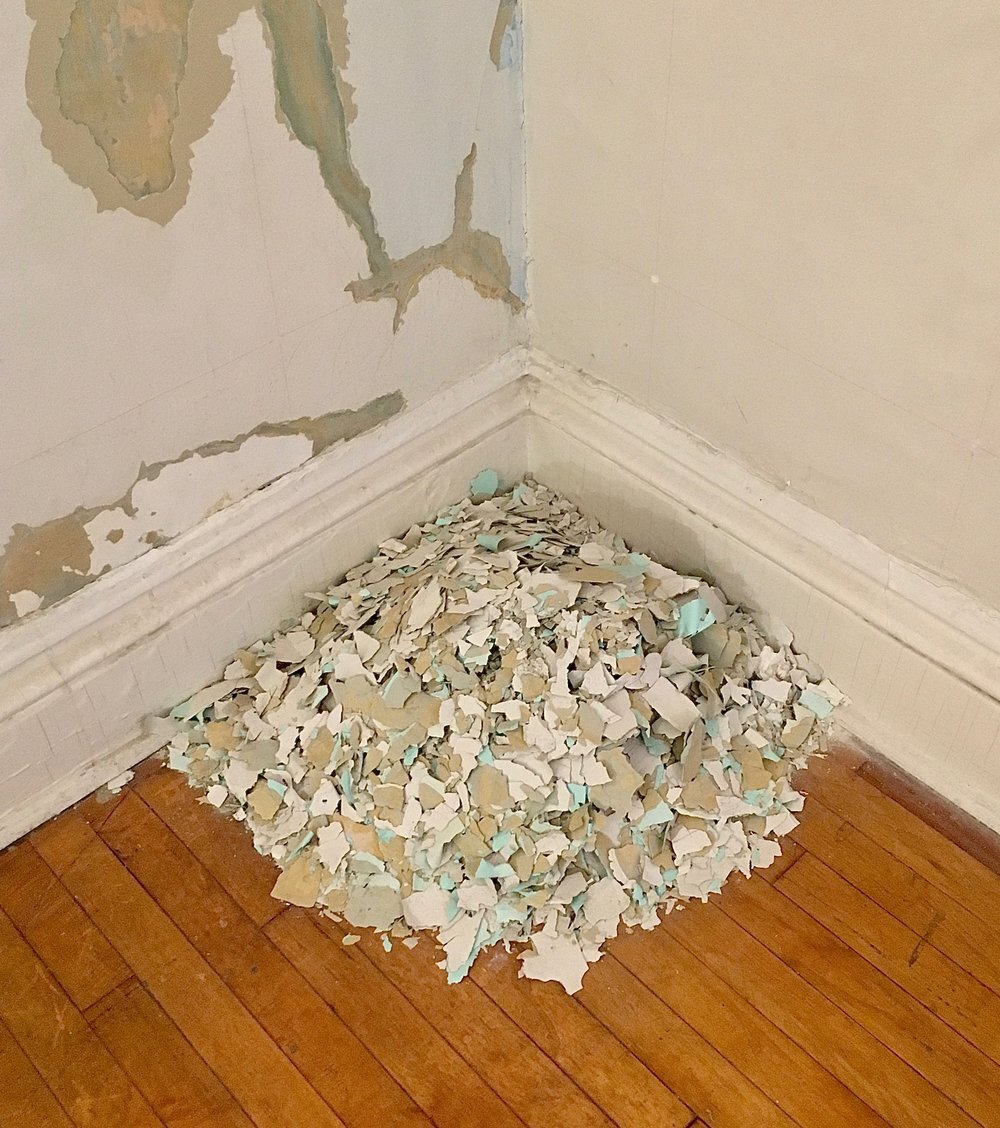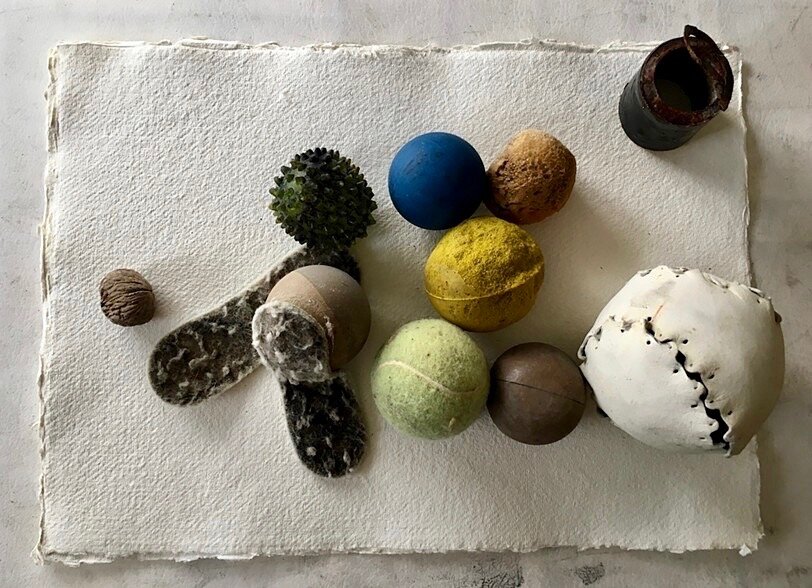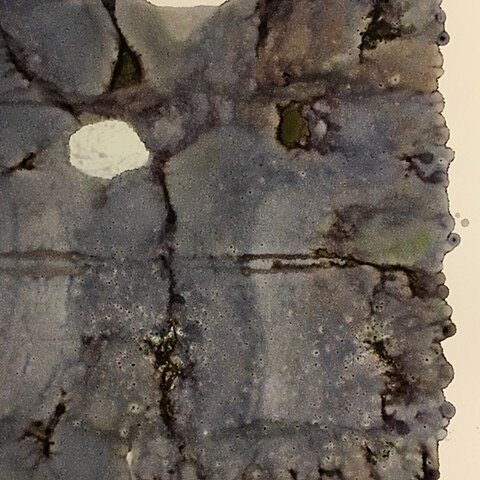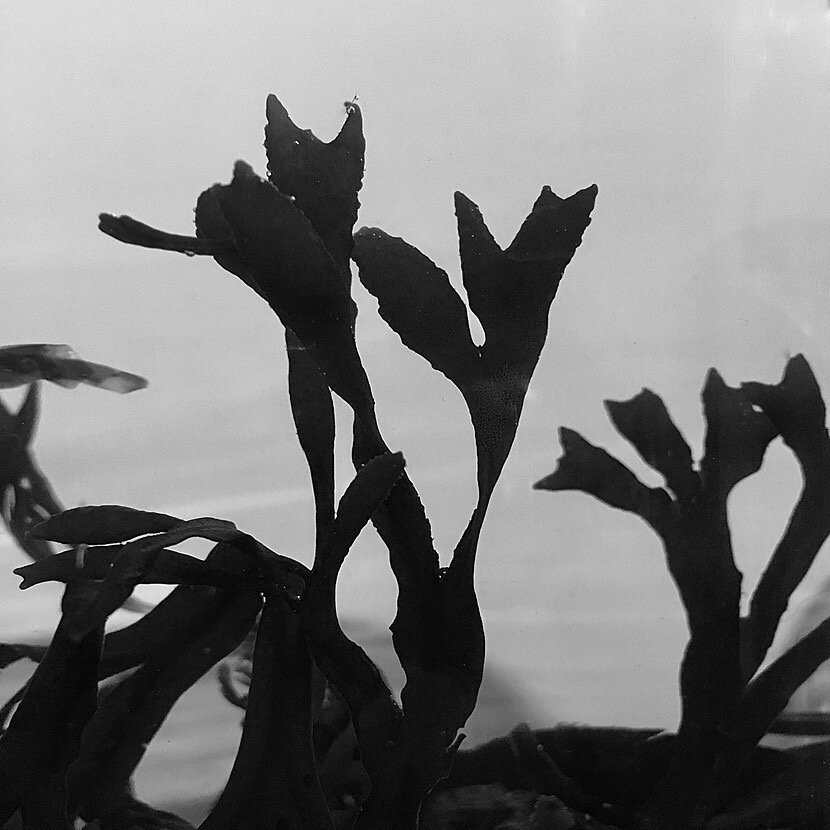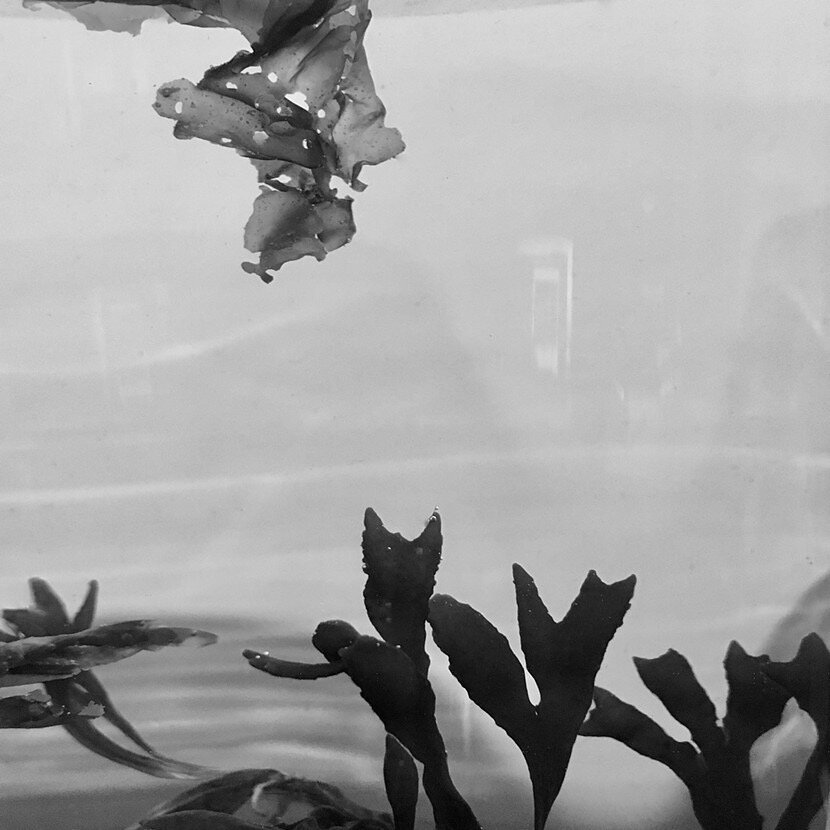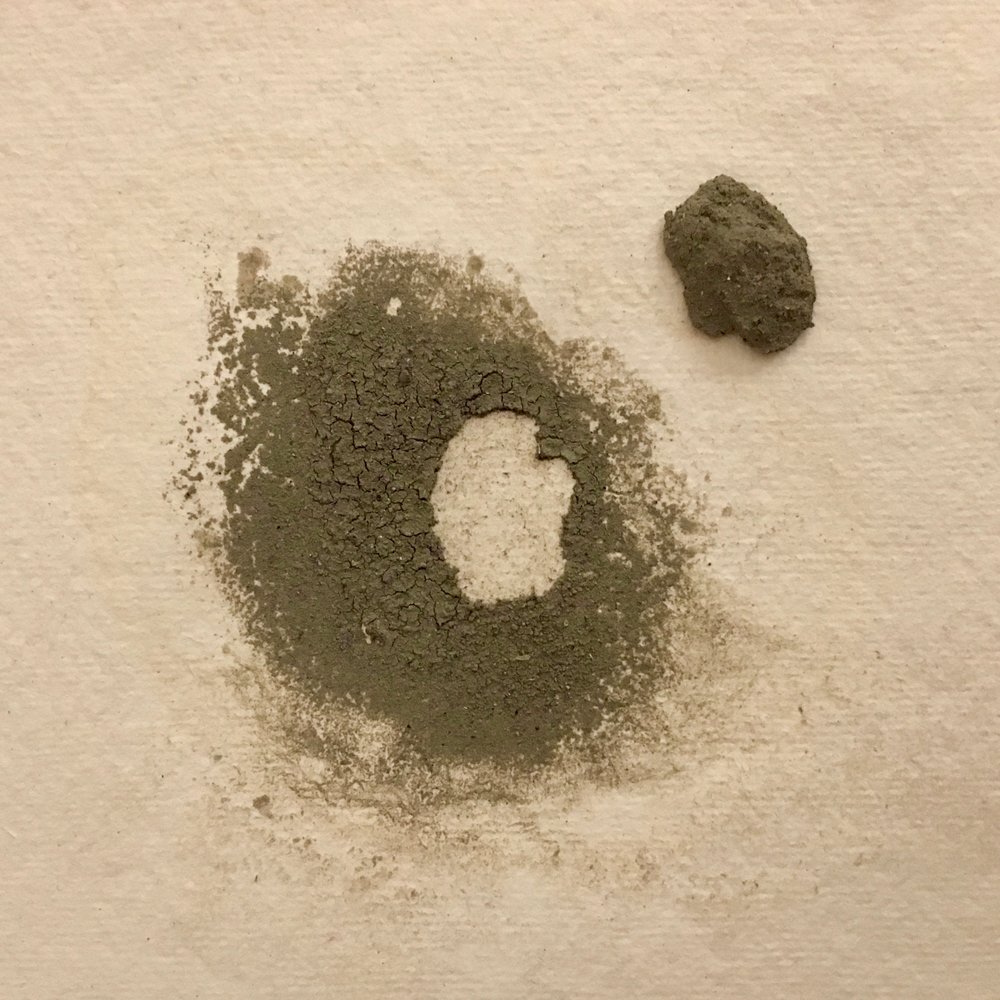Synthetic Tides
The walls of my September studio seep the residue of passing storms and rising tides, and perhaps even now, the damp evidence of Hurricane Sandy. The peeling paint already map-like in its distribution leaves forms of flooded landscapes and archipelagos—islands of plaster, primer, lead, and latex. Holding my breath behind my mask, I excavate further, causing new erosions. Seas rise up and swallow land masses as more paint loses its hold and falls to the floor revealing new coastlines in old layers, strata of decades not millennia. New rivers course along old cracks, fracturing in familiar branching patterns. On another wall, fissures become tributaries, waterborne diseases growing out of the rising and polluted tides—drinking water delivering old threats to new places; countries at war for this increasingly scarce commodity. I push the large pile of unsound scrapings into a corner, a small mountain of evidence that what we throw away will always be here.
Outside, cut off from the shore by a chain-link fence, I photograph the debris in situ. Garbage from across the globe that has passed unimpeded through time zones, borders, and security checks is caught now in the rocks of the reconstructed coastline of this Paggank, this Noten Eylandt. Stranded are ship ropes, the soles of shoes, plastic fencing, and fishing lines; a “No Crossing” barrier and a mass of assorted styrofoam; door panels, a still-rolled and broken sail, a five-gallon bucket and plastic sheeting; liquor bottles, water bottles, mini-bar bottles, and soda bottles; a giant, stuffed and sodden, once-white carnival bear; a car bumper, the sheafing remains of a cardboard box that once held Slow & Low rye whiskey 84 proof; wave-churned, smooth-polished tree limbs; beams from broken buildings jutting with rusty nails; fishing nets and landscape matting; a golf ball, footballs, soccer balls, soft balls, and a child’s nubby, plastic, bouncy ball that used to light up; furniture parts; free-flying, green plastic pallet strapping; three helium balloons—one bright pink; assorted seaweeds, and a walnut worn smooth by its journey back to this Nut Island. I find a way to reach past the high fence and grab some pieces to work with and haul my stash back to my light-filled, damp-filled, paint-shedding studio accompanied by a chorus of kinglets and helicopters.
Working with images of the seaweed and materials from the rocky strand-line, I experiment with photographic mono-prints. I let the inks flow and bleed across their natural borderlines, breaking through the surface tension, abstracting the original image almost beyond recognition. I notice changes in the viscosity of the ink as the humidity changes from day to day. I make collections of found objects and study the seaweeds I have found—mainly Fucus vesiculosus (Bladderwrack) and Ulva (Sea lettuce) that thrive in the surrounding waters of New York Harbor. The vibrant green Ulva flourishes in nitrogen-rich, polluted waters—a signifier, the canary in the coalmine. Bladderwrack has many names, including rockweed, black tang, cut weed, sea oak and dyers fucus. I copy and cut its dendritic forms from oil-sleek black, plastic garbage bags and suspend them together in water. They sway entwined, almost indistinguishable as one leaches pollutants and the other absorbs, one releasing, the other containing.
With grateful thanks to Mauricio Gonzalez, head of Marine Biology and Science Research at New York Harbor School and his 11th grade class, for all their help and instruction collecting and analyzing harbor mud and seaweed.
About the Artist
My work is rooted in "place" using materials from the natural and manmade world reflecting the Anthropocene age in which we live. Using elements of the landscape my work is inspired and influenced by the topography and history of a place and it's ever-changing environment from the shifting and increasingly polluted tides, to the effect of man on community and landscape, to man himself and the shared visual language of natural forms.
I work with an amalgam of different materials and artifacts relating to specific geographical locations. I use local maps, beeswax from nearby hives (literally a distillation of place and time); pigments drawn from the mud, various coloured earths, vegetation, rust and charcoal. I look for inspiration and materials in the environment whether in the woods, abandoned places or building sites, using debris found along the shore and strand lines of estuaries, riverbanks and marshes, from the source of a stream to where it meets the ocean, through places both rural and urban. I collect sounds, images, data and objects. With these elements I create work that embodies a sense of place - totems of landscapes that resonate with me.


